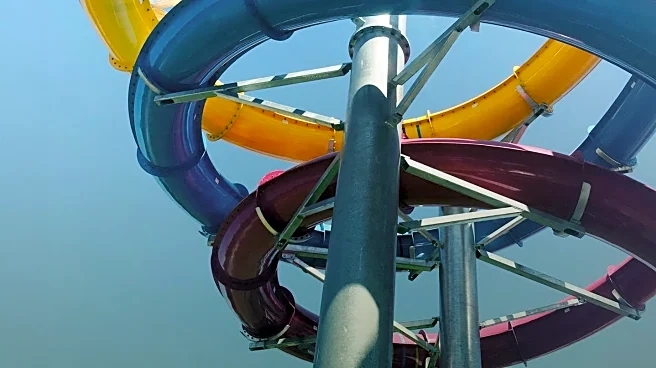Rapid Read • 9 min read
In 1984, Theo Gay Anderson, then a 13-year-old schoolboy, won a competition on the BBC's Blue Peter show with his dragon-themed garden slide design. This design became the centerpiece of the International Garden Festival in Liverpool. The festival was a significant event, being the largest UK exhibition since the Festival of Britain in 1951. Theo's design was so impressive that it caught the attention of Queen Elizabeth II during her visit to the festival. Over the years, the dragon slide became a beloved feature for generations of Liverpool children. However, despite its popularity, the slide faced a tragic end when it was set on fire by vandals, rendering it beyond repair. This incident occurred amidst plans to transform the Festival Gardens into housing and public spaces, which unfortunately came too late to save the iconic slide.
AD
The story of Theo Gay Anderson's dragon slide highlights the cultural and historical significance of public art and community spaces. The slide not only served as a creative outlet for a young artist but also became a cherished part of Liverpool's cultural heritage. Its destruction underscores the challenges of preserving public art against vandalism and neglect. The incident raises broader questions about the protection and maintenance of community landmarks, which hold sentimental value and contribute to local identity. The loss of the dragon slide is a reminder of the need for proactive measures to safeguard such cultural assets, ensuring they can be enjoyed by future generations.
With the dragon slide now destroyed, attention turns to the future of the Festival Gardens site. Plans are underway to redevelop the area into housing and public spaces, which could offer new opportunities for community engagement and cultural expression. Stakeholders, including local authorities and community groups, may need to consider how to incorporate elements of the site's history into the new development. This could involve creating new art installations or memorials that pay homage to the site's past, including the legacy of the dragon slide. The redevelopment presents a chance to reimagine the space while honoring its historical significance.
The destruction of the dragon slide also highlights the broader issue of vandalism and its impact on public spaces. It raises questions about the societal factors that contribute to such acts and the measures that can be taken to prevent them. Additionally, the story reflects on the role of public art in fostering community pride and identity. As cities evolve, balancing development with the preservation of cultural landmarks becomes increasingly important. This incident serves as a case study for other communities facing similar challenges, emphasizing the need for collaborative efforts to protect and celebrate public art.
AD
More Stories You Might Enjoy











